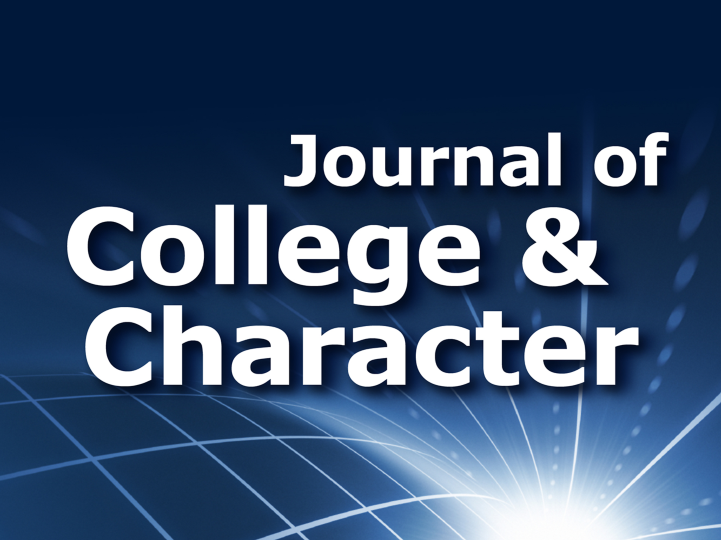
Questions Relating to Moral Development: JCC, May 2021
May 22, 2021
Here are some important questions that relate to moral development that are explored in articles in the May 2021 issue (vol. 22, no. 2) of the Journal of College and Character:
1. What four aspects of sprituality can support women's leadership practice?
Fresh Strategies for Empowering Women’s Leadership Development: Spirituality as an Untapped Tool
Karen A. Longman
Longman explains how leadership of women can have positive influential leadership, while enhancing women's leadership goals and providing support of their leadership development. This "uptapped tool" involves four aspects of spirituality: (a) leadership to advance a meaningful purpose, (b) leadership as a response to a sense of calling, (c) leadership from the perspective of to “stewarding” gifts and strengths, and (d) leadership that honors relational responsibility. Read the article.
2. How do college students perceive differences of culture and race?
“Look at Our Country, We Treat Everyone as Equal”: College Student Perspectives on Culture
SuYeon Lee, Louise Parker and Thomas Power
Lee, Parker, and Power interviewed undergraduate students based on the developmental model of intercultural sensitivity. Findings suggest that college students generally lack a deep understanding not only of other cultures but even their own cultures. Authors present more effective strategies that would assist in increasing students' cultural competency. Read the article.
 Producing Athletes and Centering Whiteness: Reexamining Non-Revenue Generating Collegiate Athletic Cultures
Producing Athletes and Centering Whiteness: Reexamining Non-Revenue Generating Collegiate Athletic Cultures
Kirsten Hextrum
Hextrum proposes three components of athletic cultures: isolation, compliance, and competition. While these components are necessary for athletics, they contribute to the nomalization of White persons’ overrepresentation in sport, loyalty to one (White) cultural form, and perception of all social outcomes as individually and fairly won. Read the article.
3. What conditions help Muslim students feel a sense of belonging in the higher education setting?
Understanding Muslim College Students’ Sense of Belonging and Mattering at HBCUs
Darnell Cole
Cole's research findings indicate that Muslim students who felt comfortable talking with non-Muslim peers about critical social issues (i.e., racism, sexism, Islamophobia, etc.) were unlikely to feel like an outsider. Muslim students who reported that they felt supported by administrators and faculty were more likely to report feeling like they matter. Support from administrators was also significant for Muslim students’ belonging. Read the article.
4. What are the various professional roles and models chaplains assume on contemporary college campuses?
Campus Prophets, Spiritual Guides, or Interfaith Traffic Directors? The Many Lives of College and University Chaplains
John Schmalzbauer
Schmalzbauer's article focuses on three roles that capture the changing place of the chaplaincy profession in the 21st century: campus prophets, spiritual guides, and interfaith traffic directors. Read the article.
How Do Colleges and Universities Support Multifaith Chaplaincy? The Causes and Effects of Different Institutional Approaches
Elena G. van Stee, Wendy Cadge, and Rebecca Barton
Van Stee, Cadge, and Barton examine institutional approaches to multifaith chaplaincy across private institutions of higher education. The authors' findings indicate that smaller institutions and those historically affiliated with a religious group tend to employ more staff chaplains and that chaplaincy models affect how deeply chaplains and affiliates are involved on campus and the possibilities for interfaith engagement. Read the article.
5. How can a narrative-based curriculum honor students' voices?
Stories to Craft: Applying Narrative Competencies to Student Affairs
Michael J. Stebleton
Stebleton provides an overview of narrative competencies—a collection of skills that educators can use with students—that is provided in an attempt to more fully listen and honor students’ voices. The author highlights several examples of narrative-based curriculum and encourages student affairs educators to integrate narrative models into existing and new training programs. Read the article.